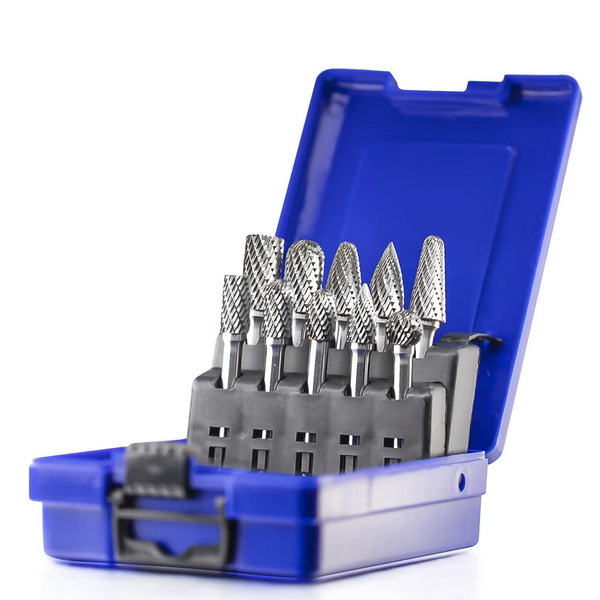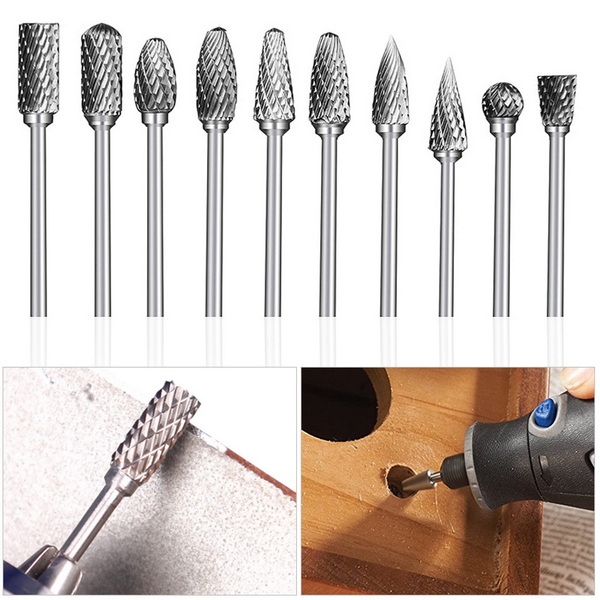Content Menu
● Understanding Tungsten Carbide
>> Physical Properties
>> Tungsten Carbide Structure
● The Brittleness of Tungsten Carbide
>> Why Does Tungsten Carbide Shatter?
>> Conditions Leading to Shattering
● Applications of Tungsten Carbide
>> Jewelry
>>> Design Versatility
>> Industrial Tools
>>> Types of Tools
>> Mining and Construction
>>> Performance Under Stress
>> Coatings
>>> Application Techniques
>> Aerospace and Automotive Industries
>>> Critical Components
● Advantages and Disadvantages
● Preventing Shattering in Tungsten Carbide Products
>> Proper Handling
>> Quality Manufacturing
>> Design Considerations
>> Regular Maintenance
● Real-Life Examples of Tungsten Carbide Applications
>> Example 1: Tungsten Carbide Rings
>> Example 2: Industrial Cutting Tools
>> Example 3: Mining Operations
● Conclusion
● FAQs
>> 1. Can tungsten carbide be repaired if it shatters?
>> 2. Is tungsten carbide suitable for everyday jewelry?
>> 3. How does tungsten carbide compare with other metals?
>> 4. Can tungsten carbide withstand heat?
>> 5. What are common uses of tungsten carbide?
● Citations:
Tungsten carbide is a material known for its remarkable hardness and durability, making it a popular choice in various applications, from jewelry to industrial tools. However, its rigidity also raises questions about its brittleness and susceptibility to shattering. This article explores the properties of tungsten carbide, the conditions under which it may shatter, and practical implications for its use.

Understanding Tungsten Carbide
Tungsten carbide (WC) is a chemical compound formed by equal parts of tungsten and carbon atoms. It is renowned for its extreme hardness, ranking between 9 and 9.5 on the Mohs scale, just below diamond. This hardness makes tungsten carbide resistant to scratching and wear, which is why it is often used in manufacturing cutting tools, industrial machinery, and high-end jewelry.
Physical Properties
- Hardness: 9 to 9.5 on the Mohs scale
- Melting Point: Approximately 2,870°C (5,200°F)
- Density: About 15.6 g/cm³
- Compressive Strength: High resistance to crushing forces
Despite these impressive properties, tungsten carbide's lack of malleability means that it cannot bend under stress. Instead, when subjected to significant force or impact, it tends to crack or shatter rather than deform.
Tungsten Carbide Structure
The microstructure of tungsten carbide typically consists of a very fine grain size that contributes to its hardness. The grains are often bonded with cobalt or nickel as a binder phase, which enhances toughness but can also introduce brittleness if not properly managed. The balance between hardness and toughness is crucial in determining how the material behaves under stress.
The Brittleness of Tungsten Carbide
Why Does Tungsten Carbide Shatter?
The brittleness of tungsten carbide can be attributed to several factors:
- Rigidity: Unlike softer metals that can absorb impact through bending, tungsten carbide's rigid structure leads to failure under sudden stress.
- Impact Resistance: While tungsten carbide can withstand high compressive forces, it is less effective against tensile forces or sharp impacts. This makes it prone to cracking if dropped or struck sharply.
- Manufacturing Process: The presence of binders like cobalt or nickel can influence the brittleness of tungsten carbide. Higher cobalt content generally increases toughness but may reduce hardness slightly.
Conditions Leading to Shattering
Tungsten carbide can shatter under specific conditions:
1. Sharp Impacts: A sudden blow from a hard object can cause fractures.
2. Extreme Pressure: Applying excessive force beyond its compressive strength can lead to breakage.
3. Temperature Variations: Rapid temperature changes can create stress within the material, leading to cracks.
4. Flaws in Material: Any pre-existing micro-cracks or flaws within the material can act as stress concentrators, making it more susceptible to shattering under load.
Applications of Tungsten Carbide
Tungsten carbide's unique properties make it suitable for various applications:
Jewelry
One of the most popular uses of tungsten carbide is in jewelry, particularly wedding bands and fashion rings. Its scratch-resistant nature ensures that the jewelry maintains its polished appearance over time. Additionally, tungsten carbide can be crafted into various styles and finishes, appealing to different tastes.
Design Versatility
Tungsten carbide jewelry comes in various designs—from classic polished finishes to intricate engravings and inlays with other materials like wood or gemstones. This versatility allows for personalized expressions while maintaining durability.
Industrial Tools
In the industrial sector, tungsten carbide is widely used in manufacturing cutting tools and drill bits due to its exceptional wear resistance. These tools can withstand rigorous use in machining metals and other materials without dulling quickly.
Types of Tools
Common tools made from tungsten carbide include:
- Drill bits
- End mills
- Inserts for turning operations
- Saw blades
These tools are essential in industries such as aerospace, automotive, and construction.
Mining and Construction
Tungsten carbide is also employed in mining and construction applications where heavy-duty equipment is required. Drill bits made from tungsten carbide are capable of penetrating hard rock formations efficiently, making them indispensable in these industries.
Performance Under Stress
In mining operations, tungsten carbide tools must endure extreme conditions such as high pressure and abrasive materials. Their ability to maintain sharpness and resist wear significantly enhances productivity.
Coatings
Another application involves using tungsten carbide as a protective coating for machinery components. This coating enhances durability against wear and corrosion, extending the lifespan of essential equipment.
Application Techniques
Tungsten carbide coatings are typically applied using processes such as thermal spraying or chemical vapor deposition (CVD). These techniques allow for a uniform coating that adheres well to various substrates.
Aerospace and Automotive Industries
In aerospace and automotive industries, tungsten carbide components are utilized for their strength and heat resistance. They are often found in engine parts and cutting tools that require precision and durability under extreme conditions.
Critical Components
Examples include:
- Valve seats
- Piston pins
- Turbocharger components
These parts must withstand high temperatures and pressures while maintaining performance over extended periods.

Advantages and Disadvantages
| Advantages | Disadvantages |
| Extremely hard and durable | Prone to shattering |
| High resistance to scratches | Less malleable than softer metals |
| Maintains performance at high temperatures | Difficult to repair if broken |
| Excellent wear resistance | Can be brittle under certain conditions |
Preventing Shattering in Tungsten Carbide Products
Given the potential for shattering in tungsten carbide products, there are several strategies that manufacturers and users can adopt:
Proper Handling
Users should handle tungsten carbide items with care to avoid dropping or striking them against hard surfaces. For jewelry wearers, removing rings before engaging in activities that may expose them to sharp impacts can help prevent damage.
Quality Manufacturing
Investing in high-quality tungsten carbide products from reputable manufacturers ensures better control over material properties during production. These manufacturers often implement processes that enhance toughness while maintaining hardness.
Design Considerations
In applications where impact resistance is critical, engineers should consider design modifications that distribute stress more evenly across components. This may involve altering shapes or adding features that absorb shock.
Regular Maintenance
For industrial tools made from tungsten carbide, regular maintenance such as sharpening or replacing worn parts can prevent unexpected failures due to excessive wear or damage.
Real-Life Examples of Tungsten Carbide Applications
To illustrate the practical applications of tungsten carbide further, let's delve into some real-life examples:
Example 1: Tungsten Carbide Rings
Many couples choose tungsten carbide wedding bands due to their scratch resistance and lasting shine. However, some individuals have reported instances where their rings cracked after being dropped on hard surfaces during activities like sports or manual labor. This highlights the importance of understanding both the benefits and limitations of this material when selecting jewelry.
Example 2: Industrial Cutting Tools
In manufacturing settings where precision cutting tools are essential, companies often opt for tungsten carbide drill bits over traditional steel ones due to their longevity. A case study showed that a factory using tungsten carbide drill bits experienced a 50% reduction in tool replacement costs over six months compared to using standard drill bits—demonstrating significant cost savings alongside improved performance.
Example 3: Mining Operations
In mining operations utilizing rotary drilling techniques, drill bits made from tungsten carbide have proven invaluable due to their ability to penetrate tough geological formations efficiently. A mining company reported increased drilling speeds by up to 30% when switching from conventional steel bits to those made with tungsten carbide—a testament to its effectiveness under demanding conditions.
Conclusion
In conclusion, while tungsten carbide is celebrated for its hardness and durability, it is essential to recognize its brittleness. Under specific conditions—such as sharp impacts or extreme pressure—tungsten carbide can shatter rather than bend or deform. Understanding these properties helps in making informed decisions about its use in various applications.
By employing proper handling techniques, investing in quality manufacturing practices, considering design modifications, and performing regular maintenance, users can mitigate the risk of shattering while enjoying the benefits of this remarkable material.

FAQs
1. Can tungsten carbide be repaired if it shatters?
No, once tungsten carbide shatters, it cannot be repaired due to its brittle nature.
2. Is tungsten carbide suitable for everyday jewelry?
Yes, tungsten carbide is suitable for everyday jewelry due to its scratch resistance but should be handled carefully to avoid impacts.
3. How does tungsten carbide compare with other metals?
Tungsten carbide is much harder than most metals but is more brittle compared to softer metals like gold or silver.
4. Can tungsten carbide withstand heat?
Yes, tungsten carbide has a high melting point (approximately 2,870°C), making it suitable for high-temperature applications.
5. What are common uses of tungsten carbide?
Common uses include cutting tools, industrial machinery parts, jewelry, mining equipment, and protective coatings for machinery components.
Citations:
[1] https://redwoodrings.com/blogs/redwood-rings-blog/tungsten-ring-break
[2] https://en.wikipedia.org/wiki/Tungsten_carbide
[3] https://www.iconicjewelry.com/tungsten-rings-does-tungsten-shatter/
[4] https://www.linde-amt.com/resource-library/articles/tungsten-carbide
[5] https://cowseal.com/tungsten-vs-tungsten-carbide/
[6] https://www.vedantu.com/chemistry/tungsten-carbide
[7] https://shop.machinemfg.com/the-pros-and-cons-of-tungsten-carbide-a-comprehensive-guide/
[8] http://www.tungsten-carbide.com.cn
















